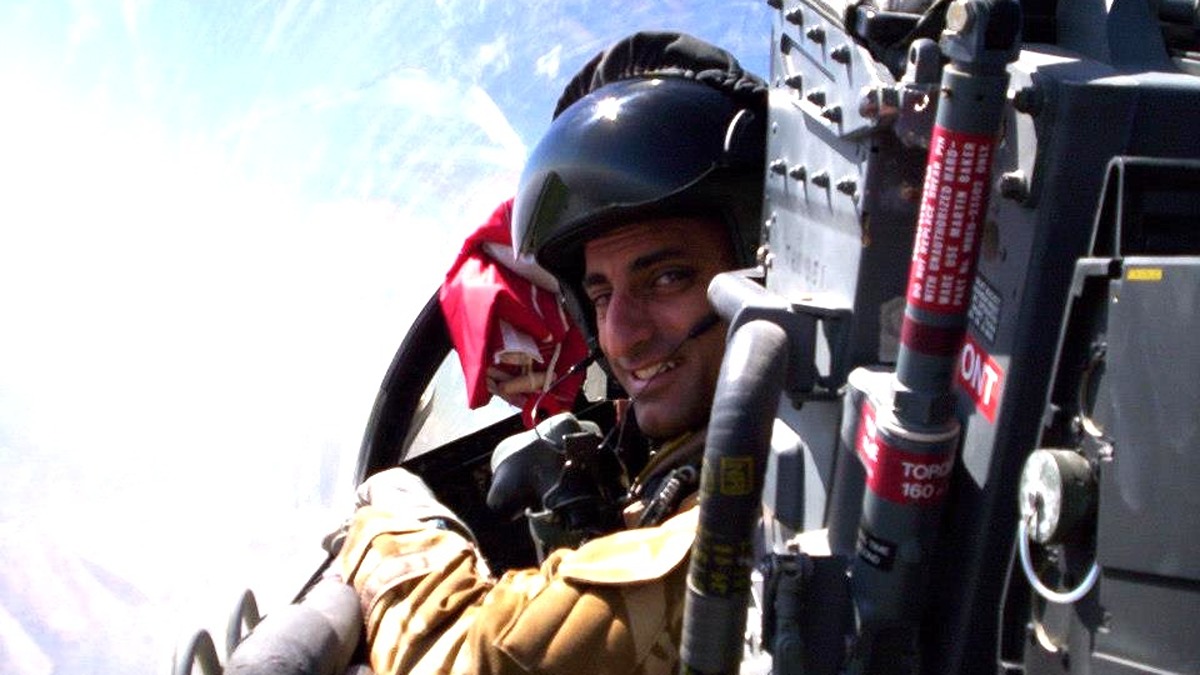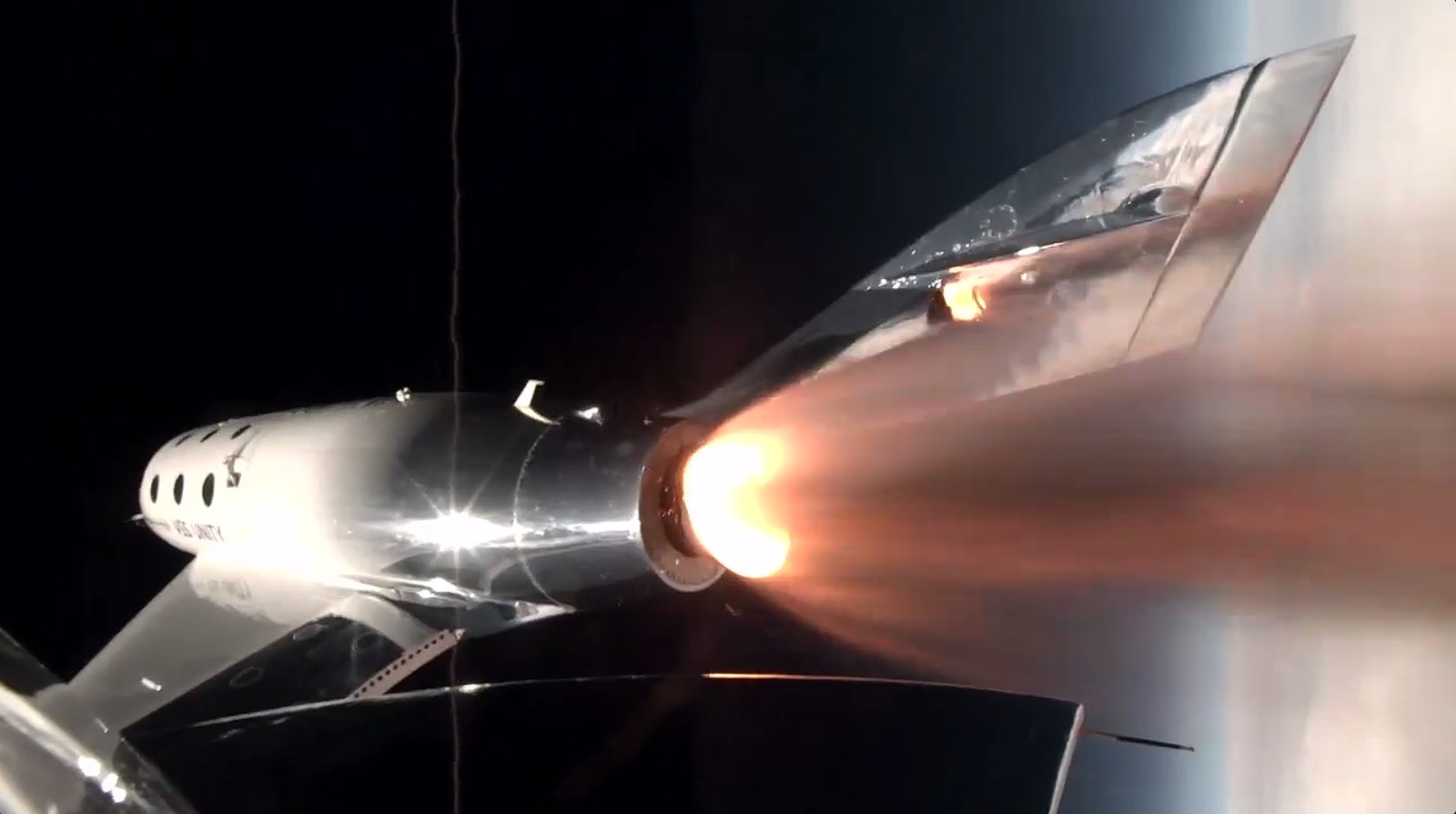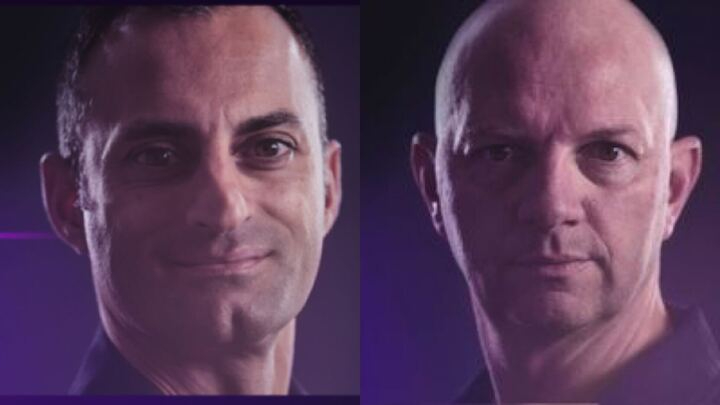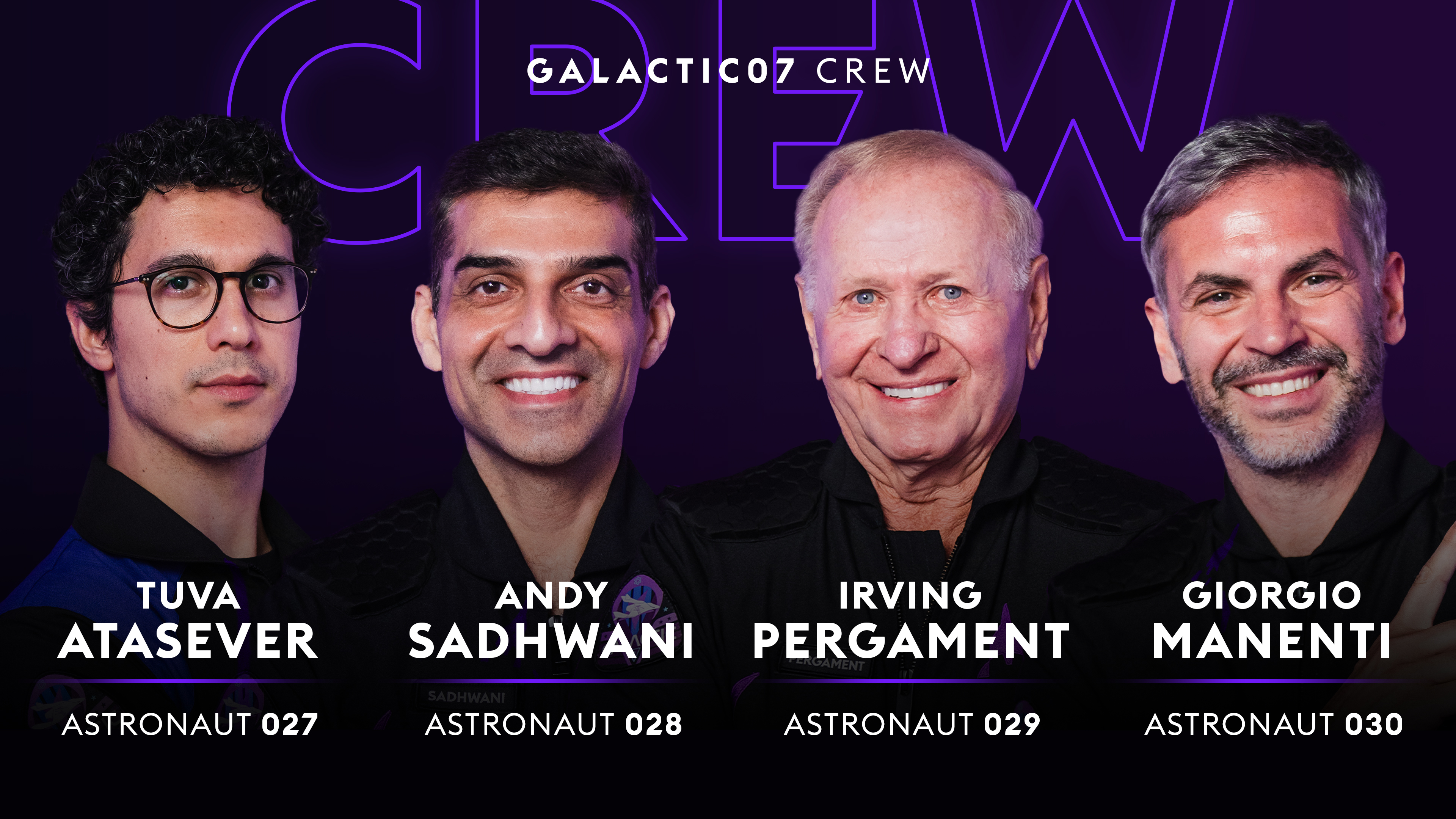
It was third time lucky for new pilot-turned-astronaut Jameel Janjua.
Dual Canada-U.S. national Janjua flew the pilot's seat in Virgin Galactic's most recent spaceflight last month, called Galactic 07. But his journey to becoming an astronaut took 15 years and three tries — and that's only counting the time since he was a semi-finalist for a Canadian Space Agency astronaut selection in 2009.
In the decades before Janjua copiloted the VSS Unity spaceship on June 8, he accumulated more than 5,200 hours across 65 aircraft types in several military corps. His time at Virgin Galactic has also been busy, often flying the mothership VMS Eve in support of other suborbital spaceflights.
Janjua spoke with Space.com on June 27 about his journey to becoming an astronaut, getting ready for Virgin's new Delta class of spaceships, and what he hopes others will take from his long path to space.
Space.com: Did you ever apply to be a Canadian Space Agency astronaut?
Janjua: I applied twice. In 2009, it was the first recruitment they had done since 1992 — that's 17 years. I was there right up to the bitter end. There were four people left for two spots: David Saint-Jacques, Jeremy Hansen, Josh Kutryk and me. Josh and I obviously were not selected on that campaign. Then I played again [during the most recent astronaut selection] in 2016-17. Josh was selected, thankfully, with Jenni Gibbons. And then I got to go over to Virgin Galactic in October 2020.
My flight, I think, highlights the benefits of the commercial space industry. We have this chorus of folks that want to participate. Government programs are great, but they have funding limits and seat limits and a lot of other factors. It's wonderful that these commercial space companies provide for a diverse set of voices and backgrounds and experience. This is what we are doing. Maybe I'm a real, tangible example of the benefits that can precipitate from these types of endeavors. Fingers crossed.

There were lots of times in my life where I thought, "Ah, space isn't going to happen." I want to share a message of determination. There's going to be a lot of young people out there, all over the world.
One of the most important things that I can do as a matter of social responsibility and public service, is to share a message of: "You know what? There's lots of times where it's going to feel like it's not going to happen." I'll be fair: Look. Sometimes it won't. But [you will see] something like it, or in a different way, or with a different embodiment. That will happen.
Related: Canada's Artemis 2 astronaut was named after a 14-year-wait for space

Meet @JameelJanjua. Jameel is one of our pilots flying to space on #Galactic07! pic.twitter.com/C1JpZX117qJune 6, 2024
Space.com: This was Virgin Galactic's last flight with VSS Unity and VMS Eve. How are you, as a pilot, getting ready for the forthcoming Delta program?
Janjua: We are on track to a flight test in 2025 and commercial service in 2026. That's the programmatic side. On the developmental side, it's great to be part of something like this. I went to university and got a master's degree. But there was no class on, like, how to build and test a spaceship.
It's really important to have operator input, so that's what we pilots provide. We support the design effort, and discuss how we're going to test these vehicles. We'll work from the integrated ground vehicle testing, to the initial carry flights and full-duration flights. Then entry into commercial service.
With Virgin, there's a lot to learn about these systems. These are one-of-a kind vehicles. We're looking to produce our Delta-class spaceships. We have the correct experience to show up as experimental test pilots, but there's a little bit of a considered learning process. We impose very high professional standards on ourselves. We're thirsty, right? We're hungry for knowledge.

Space.com: So for your flight, I want to perhaps break it into two aspects, first the pilot side of it, then the human side. So let's start with the pilot. Can you bring me through your objectives?
Janjua: Our goal is to fly a safe and effective profile. It should be effortless, right? Like it's just another day in the simulator. But you're not in the sim. You're in a real spaceship going to space at three times the speed of sound. [Commander] Nicola Pecile and I spent a lot of time in the sim and a lot of time together.
I remember once we were flying a light aircraft together. I thought to myself: "This is a great environment, just a little bit of a distraction." Somebody's talking on the radio once in a while.
But because we're two very experienced pilots, we went through every emergency procedure in that book so that we never see these things for the first time. Then we practiced them in the sim. As we neared the date of the flight, we really locked in on flying nominal profile and we practiced that a lot.
Just doing a bit of light, in-flight reading with @NicolaPecile. Not going to lie, getting excited! #Galactic07 pic.twitter.com/YqwesNfDPiMay 21, 2024
In the days prior, the future astronauts — our clients — arrived. We got all the pre-checks done in the days prior. We facilitated with Colin Bennett, the cabin lead, who did astronaut training and got them on board.
After liftoff, Eve does a lot of the work. Eve spends about 45 or 50 minutes climbing to 45,000 feet (13,700 meters) overhead of Spaceport America. Nicola and I have various things that we do en route, just to make sure all the systems are performing appropriately. And finally, Eve sort of lines us up for release north of Spaceport America, pointing south.
Related: How many people can fly on Virgin Galactic's SpaceShipTwo space plane?

[For several spaceflights before this] I was in Eve either as a commander, or the pilot dropping a spaceship. Frankly, commander of Eve is such an important position in this team. This time it was Andy Edgell's job — and he did it masterfully — to offload any amount of workload he can from the spaceship, and climb up that hill to 45,000 feet (13,700 meters). And CJ Sturckow was with him, and [because he's quiet] we joked that CJ wasn't in the room. CJ would very much deny that, but it was great. It was just a really nice mix of personalities and professional attributes in those two cockpits.
There wasn't this feeling of anxiety [for me], but it's palpable. It's like, "We're actually going to do this." For me, it's my first time flying this vehicle. There's a little voice in the back of your head. It's like, "I can't believe this is actually happening." But, I needed to do the timeline. Nicola was relying on me to do certain things, and I was relying on him, Andy and CJ.
CJ released us from the mothership. Nicola asked me to light the motor. I lit the rocket motor. It's impressive. You feel its acceleration, and it's persistent. I remember thinking to myself. "This is how we get to Mach 3: pointed straight up."
Then Nicola and I, we had a division of tasks. I was responsible for ensuring the health of the motor and that the feather re-entry system operates as intended and is actuated on time. Nicola took care of the trajectory of the ship, for the most part, and obviously he has discretion to do anything [as commander]. Then Nicola landed the spaceship, and did a fantastic job.
Related: Virgin Galactic's next spaceship gets its 'feather' (video)
The boss said “Fire!” I lit the wick with the pull of a switch and replied with a confirmatory “Fire!” @NicolaPecile and I were off on the ride of our lives. 🚀 📸@Loookulele pic.twitter.com/Oo5klI6ctsJune 19, 2024
Space.com: And how about the human side? I can see on your socials that you've been thinking about it a lot.
Janjua: If you weren't thinking about it, then you're not human. This is really the way in which we are opening up access to space for humanity, to folks who otherwise would have thought, "I don't have a place here. I don't have a way in here, or anything to do with this." Nicola and I have an implied responsibility to guide the people on our crew to make sure that they also experience their flight in a way that they want, but with a human aspect.
As for myself, as I already said, this doesn't happen overnight. This is something not many humans have ever gotten to do, right? I tried to be respectful of that in the time I had — when it was appropriate to think about that — and give it the time and thoughts it deserved. I'm still doing that, honestly, in the aftermath. I'm trying to take some time when I can, to think about it and give it the time it deserves, to process it.
It's like your first solo in an aircraft. You build up through a pre-check ride with your instructor, and the rehearsal sim. Every step is a step closer to what is hopefully the inevitable. It was palpable. It was really meaningful. It's hard to describe, right? I try and replay it in my mind. When I watch the videos that our comms and media team produce, they help me kind of go back. Our brains [as pilots] are wired to really for us to focus on the technical side, to fly that ship safely and effectively.
But there are lots of moments. I remember looking over my right shoulder at one point, when we were about two minutes to release. Giorgio Manenti was sitting right behind me, and I remember looking at him. I had my visor up, and I purposely kept my visor up the whole time because I didn't want to forget to put it up when we were in space.
I remember looking back at him, and I winked. He gave me a thumbs up, and he winked. The two of us — we had a mind meld. We were thinking the same thing.
We could talk more about space and describe all the feelings that this human had, looking out the window at the vastness of space in the universe, and that "darkest dark" that [retired CSA astronaut] Chris Hadfield talks about in his children's book. Then the most vivid colors you've ever seen in your life on your own planet. Imagine the photos just juiced up in in vibrance. There's a sense of humility that — for me — makes you feel so insignificant in a healthy, positive way.
This interview was edited and condensed.







